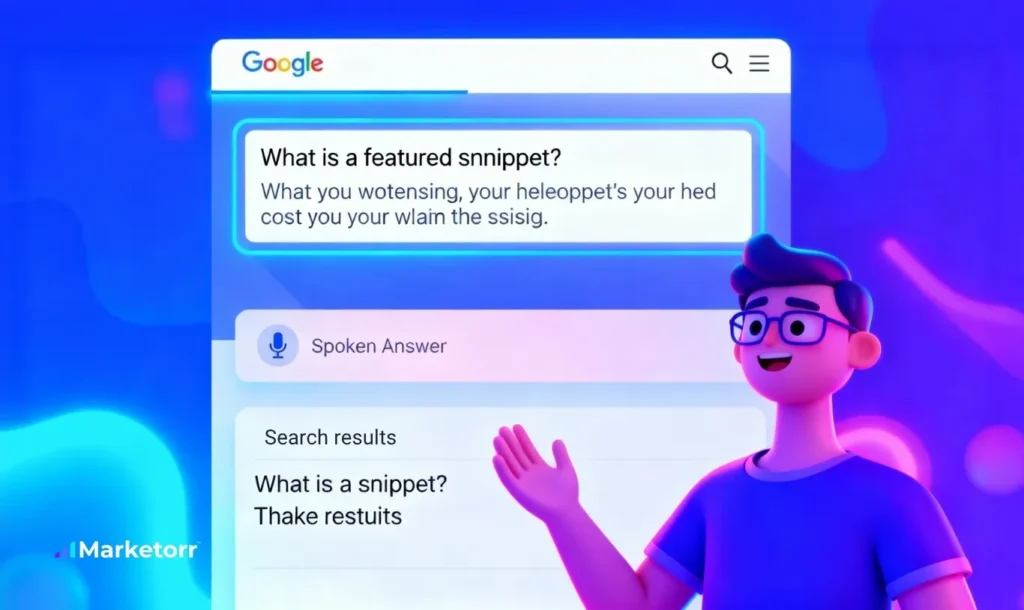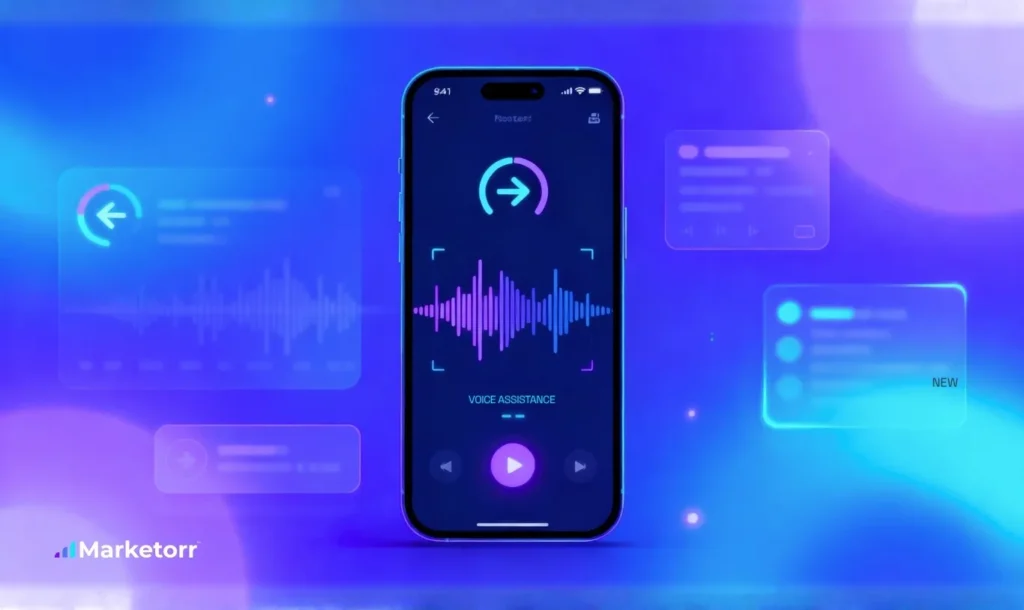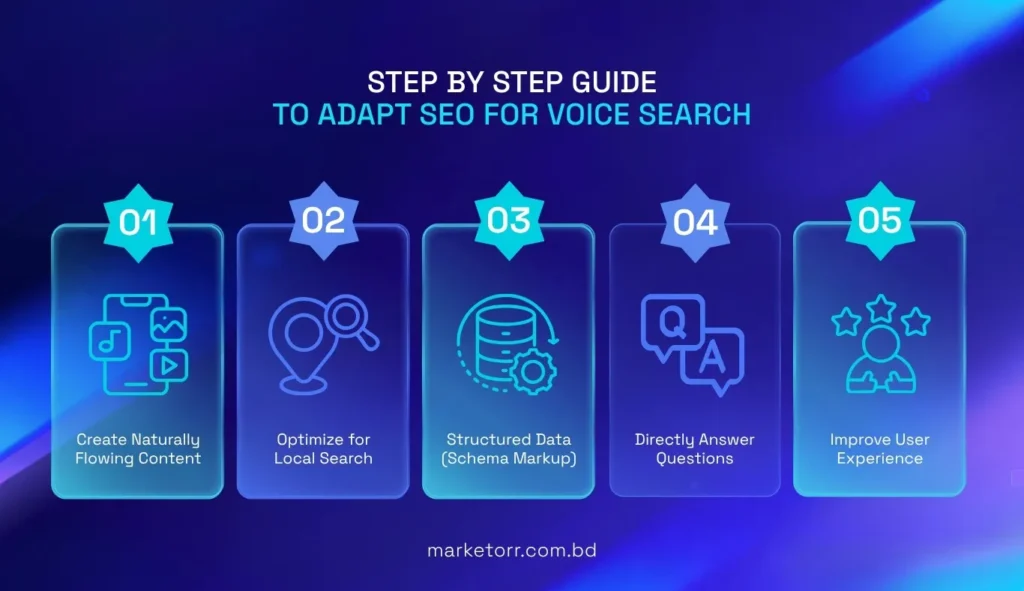Sometimes it’s astonishing how big shifts happen extremely fast. Just a few years ago, voice search felt like a novelty. By 2024, an estimated number of 8.4 billion voice assistants were in use worldwide. That’s more than the global population.
It’s not even surprising that people are turning to it. It’s faster, easier, and now accurate in answering 93.7% of queries. One eye opening fact is, 40.7% of voice search answers are pulled from featured snippets.
This means if your content isn’t well-structured for that slot, you’re invisible to almost half of voice assistants.
Now that’s a serious wake-up call for business owners, SEO professionals, and marketers alike. In fact, that’s just a small example of how voice search is changing the dimensions for people.
Because users are no longer typing, they are talking. And not taking the fast measures might take you to some surprise cost you didn’t expect.
That’s exactly why this blog breaks down how voice search is reshaping SEO in 2025 and what specific changes you need to adapt to right now.
6 Major changes in SEO due to voice search
- Rise of Conversational Content
- Long-Tail and Question-Based Keywords
- Mobile-First & Local Search Optimization
- Importance of Featured Snippets
- User-Centric Content & Accessibility
- Content Structured for Speed & Clarity
Keep reading, because once you understand how these shifts work, you’ll start seeing SEO in a whole new way!
6 Major changes in SEO due to voice search
1. Rise of Conversational Content

Voice search feels more like talking to someone directly than typing into a search box. That means your content would only perform best if it’s read like real conversations.
For example, voice search is not just “weather tomorrow.” Rather, it sounds something like, “Hey, what’s the weather going to be in Dhaka tomorrow morning?”
That shift means your content must sound less like a keyword list and more like a helpful human dialogue. So, to optimize for voice assistance, your content should use natural phrasing, answer questions directly, and feel human when read aloud.
You’ll get a better understanding if you observe the strategies smart brands are adopting. Instead of stuffing pages with clunky keywords, these brands are focusing on story-driven explanations, quick “how-to” guidance, and FAQ-style clarity.
When your writing sounds like something a person would actually say, it has a much higher chance of becoming the voice assistant’s chosen answer.
2. Long-Tail and Question-Based Keywords

One of the clearest indicators of how voice search is reshaping SEO lies in the way people phrase their queries. The average voice search today is about 29 words long, compared to the 3-4 word typed searches we optimized for just a few years ago.
This marks a massive shift from rigid keyword fragments to complete, conversational sentences.
So, instead of chasing high-volume single terms, your brand needs to have a clear understanding of how people naturally ask questions and design their content around those conversations.
Take yourself for an example. When you’re shopping for a laptop, you’re very likely to search for “best laptop 2025” or “best laptop under $1000.”
But when you’re using voice, the question is likely going to be “Which is the best lightweight laptop for working from home under $1000?”
The advantage is twofold, as long-tail queries are more specific. This means there’s usually less competition, and when your answer is clear, structured, and conversational, you’re far more likely to rank for it.
3. Mobile-First and Local Search Optimization

Voice search and mobile go hand in hand. According to Google, 20% of mobile searches are now done by voice. On top of that, 63% of smartphone users are more likely to buy from companies whose mobile sites or apps offer them relevant recommendations.
Many voice queries also carry local intent. People don’t just search “digital marketing agency” anymore. Instead, they ask, “Which is the best digital marketing agency in Dhaka near me?”
In fact, 58 percent of users leverage voice search specifically to get details about nearby businesses.
Today, your brand’s visibility depends heavily on mobile performance, speed, and local data accuracy. Google Business Profiles, correct addresses, updated hours, and optimized local content make sure you’re selected as the voice assistant’s top answer.
In other words, if your mobile experience isn’t optimized for voice-first search, even the best content might never reach your local audience.
4. Importance of Featured Snippets

Featured snippets are fast becoming a new voice-first world. For voice assistants, the snippet isn’t just a visual highlight on a search page. It later becomes the spoken answer delivered by voice assistants.
To win the featured snippets, you need clarity with structure. Your content should lead with a short, precise answer that is usually one to two sentences long.
Then it should be followed by supporting information that provides context, examples, or alternative solutions.
Most featured snippets (around 82%) rely on paragraphs, but lists (10.8%) and tables (7.3%) appear frequently too, especially for “how-to” or comparison queries.
This makes it crucial for SEO in 2025 for competitive advantage. Being chosen as the snippet not only increases your chances of being read aloud by a voice assistant, but it also positions your brand as the authoritative answer before users even click through.
5. User-Centric Content & Accessibility

Voice search pushes a step beyond just writing style. It pushes us to focus on clarity, structure, and inclusivity, all in one piece.
One simple but critical point here is that voice assistants don’t scan ambiguous layouts or waste time guessing which text is most relevant. They rely on semantic HTML, clean headings, alt text on images, and properly positioned tags to parse meaning.
Moreover, your content should have the ability to anticipate how users will naturally ask follow-up questions.
For example, if someone asks, “What’s the best SEO tool?” they might ask next, “How much does it cost?” or “Is it easy for beginners?” Your content should already have mini pathways that feel conversational.
Readability also becomes a key factor in voice SEO. Short sentences, active voice, and simple, precise language directly impact whether your content will be chosen as a spoken answer or not.
So user-centric design and accessibility are now essential for being discovered, understood, and trusted by voice search assistants.
6. Content Structured for Speed and Clarity

At the end of the chain, voice assistants demand answers fast. In fact, ultra fast. For this reason, voice assistants naturally prioritize pages that deliver clear, concise answers immediately.
The structure of your content is equally crucial. To stay competitive, structure your content with clear headings and logical flow. Make sure each point has a distinct, easily comprehensible section.
With these steps, implementing schema markup such as FAQs, Q&A, or speakable tags helps voice assistants understand your content and deliver answers in a clear, natural, and conversational way.
How to Adapt Your SEO for Voice Search

1. Create Naturally Flowing Content
The first and most important shift in voice SEO is writing for humans, not search engines. In voice search, people don’t speak in short fragments. That’s a simple but critical point. When people talk to Alexa or Google Assistant, they speak like they would talk to a friend.
To better understand this, think about how you talk to your own voice assistant. Do you just simply throw out words like “SEO learning 2025” or actually have a conversation like “Hey Google, what’s the best way to learn SEO fast in 2025?”
Instead of obsessing over keywords, focus on intent and tone. Try to figure out what your reader really wants to understand and what emotion or motivation drives their question. It’s important because Google carefully interprets these nuances before selecting a voice answer.
Another important tip is to simulate voice interaction before you hit publish. Ask your team to read a section aloud. If it feels clunky or awkward, it’s likely that it won’t work for voice. The smoother your words sound in conversation, the more algorithm-friendly they’ll be.
2. Optimize for Local Search
Currently, 58% of consumers use voice search to find local business information and most of them happen on mobile. Generally, people ask “near me” questions while they’re literally on the move. That’s a critical insight for any business to act on.
If you’re a service provider, local optimization can turn your voice visibility into foot traffic. Think of one of your potential customers saying, “Find me a coffee shop open right now with free Wi-Fi.”
If your site doesn’t clearly mention your hours, services, and reviews, you’re almost invisible to them in such a situation. Even if you’re just around the corner.
To fix that, update your Google Business Profile frequently. Integrate hyperlocal content into your site like short blog posts about neighborhood events, guides, or even collaborations with nearby businesses.
It signals to Google that you’re embedded in the community and boosts your authority for local voice searches.
Add one more thing, make your local SEO multimodal. Because many people ask through voice but check results visually. So make sure your mobile layout, map pin, and customer reviews should all feel trustworthy and consistent.
3. Use Structured Data (Schema Markup)
Structured data works like an organized labeling system for your website. If everything’s clearly marked, voice assistants can find exactly what they need in seconds.
Schema markup helps Google interpret your content, not just index it. For example, marking a section as “FAQ” or “HowTo” tells the algorithm this is the answer zone. So when someone asks, “How do I optimize my website for voice search?” your content has a far better chance of being read aloud.
One growing trend in SEO for 2025 is the rise of Speakable Schema. It’s a special tag that helps search engines identify the exact parts of your text that sound best when spoken. It’s highly recommended if you still haven’t added it yet.
And if you run an eCommerce site, product schemas are unskippable. They allow assistants to directly quote your prices, ratings, and availability in search results.
This not only boosts your visibility but also builds instant trust with shoppers by showing key purchase details upfront.
4. Directly Answer Questions
Voice assistants are designed to give you a no-fluff and instant answers, not lengthy explanations. That means your content should lead with the answer, then follow up with context.
For example, instead of saying, “There are several factors that affect how fast a website loads…” You’d write, “Your website loads faster when images are compressed and code is clean. That’s because…”
This “inverted pyramid” style (answer first, detail later) makes it easy for search engines to extract the exact line they need to read aloud.
Additionally, think about their search intent as well. People using voice search usually want quick help, not deep research papers. So if you can answer their question in 1–2 sentences before expanding, you’re giving both Google and the user exactly what they need.
5. Improve User Experience
Voice assistants favor websites that load quickly, read clearly, and help users effortlessly navigate. No matter how optimized your keywords are, poor user experience can still silence your chances with voice search.
User experience (UX) is now a ranking factor for voice search because it directly affects how easily assistants can fetch and present your info. To make sure your content is getting picked up, you need to focus on:
- Speed: Aim for under 2.5 seconds of load time.
- Clarity: Break text into short paragraphs.
- Accessibility: Add alt text to images, use descriptive headings, and maintain strong contrast for readability.
- Trust signals: Add customer testimonials, privacy assurances, and recognizable contact info.
A website that’s intuitive, fast, and inclusive performs better everywhere, voice search is just a part of it.
Bringing It All Together
Let’s be clear on one point. Adapting to voice search doesn’t mean forgetting what you already know about SEO. It means refining how you communicate so your content connects more naturally with real people.
The foundations of good SEO still remain the same with clear information, useful answers, and an understanding of what your audience actually wants. The difference today is that those answers are being spoken aloud, not just read on a screen.
When your website provides direct, conversational answers and creates a smooth, intuitive experience, search engines recognize that value. This way you’re building genuine trust with both users and technology, not just optimizing for algorithms.
Looking Ahead With Voice Search in SEO
Voice search will continue to reshape the way people find information and make decisions. As conversations replace keywords and questions replace clicks, businesses that learn to adapt early will lead the next chapter of digital visibility.
At Marketorr, we believe the brands that listen today will lead tomorrow. Voice search is rewriting the rules of visibility, and we’re here to help businesses stay one step ahead of that change.
By combining data-driven strategy with authentic storytelling, we turn your brand’s voice into something people actually want to hear.
Because in a world full of fluff, the brands that have the ability to connect with people should always stand out among others!





